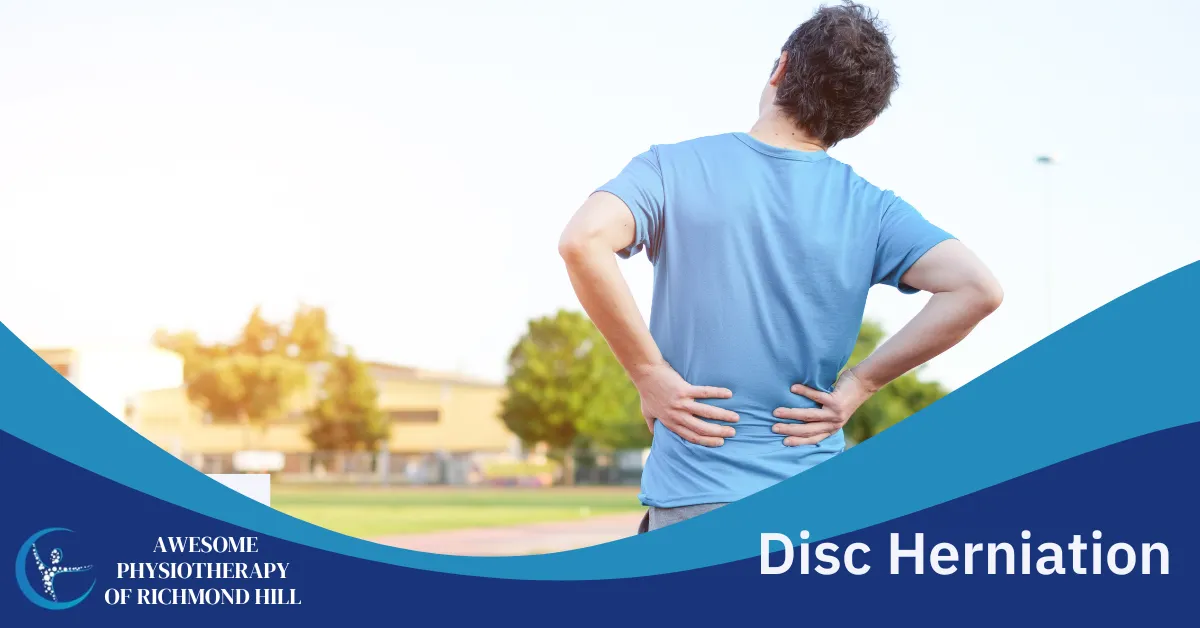What is Disc Herniation?
The vertebrae, or vertebral columns, in the back, are cushioned by discs. The nucleus of these discs is encompassed by a thick outer layer called the annulus, extensively like a small pillow. Discs serve as shock absorbers for the vertebral column located between them.
Disc herniation (also called bulged discs, slipped discs, or ruptured discs) is when the nucleus of a disc breaks free from the annulus and enters the spinal canal. The annulus is damaged or ruptured, allowing the fragment of the nucleus to escape and enter the spinal canal. Herniated discs are usually in the early stages of degeneration. The spinal canal is too narrow to accommodate the cervical nerve and the displaced herniated disc fragment. Displacement of the disc induces coercion on the spinal column, resulting in painful symptoms.
What are the Signs & Symptoms of Herniated Disc?
Herniated discs can transpire in any portion of the spine. Disc herniations are more common in the neck and lower back (lumbar spine). Inflammation in the spine affects the area of pain that is felt. It usually affected one side of the body.
· Severe low back pain, radiating pain
· Paraspinal muscle spasm
· Walking can be painful and difficult
· Antalgic or Trendelenburg gait
· Muscle spasm, tingling sensation, weakness, or atrophy
· Spine, trunk deviation
· loss of bladder or bowel control
· Slow and deliberate, tip-toe walking
· Some people may be asymptomatic.
What to expect in Herniated Disc
· Herniated can be extremely painful.
· Painful disc herniation usually heals after a few weeks.
· An MRI often detects Herniated discs in patients who don’t have any symptoms (MRI is the preferred imaging method).
· Patients with disc herniation should be treated collaboratively by a team of professionals. Treatments should be conservative unless there is severe neurological damage.
· A surgical procedure is seldom the first resort since it rarely yields predictable results. Patients usually experience residual pain and neurological deficits after surgery, often exacerbated by the procedure.
· The key to the best outcomes for most patients is Physical Therapy, though regular exercise and maintaining a healthy body weight play a bigger role than sitting in a chair all and sundry.
How Physiotherapy help in Herniated Disc
Sciatic leg pain and pain associated with disc prolapse can be treated with physiotherapy by reducing pain, stiffness, muscle spasms, and pain associated with disc prolapse. A physiotherapist will assist you in improving your muscle strength and flexibility once you’ve recovered from disc prolapse symptoms. Physiotherapists at Awsome Physiotherapy Of Richmond Hill will create an exercise plan tailored to your specific needs.
Your back will benefit from this, ensuring that it is strong and flexible, and preventing any further problems. Patients receive plenty of advice as to how to modify their activities during the acute phase of physiotherapy treatment. A pain-reduction plan is also provided.
At Awesome Physiotherapy Of Richmond Hill physiotherapy treatment for disc prolapse may include:
- strengthening exercises to help reduce the recurrence of another disc prolapse
- soft tissue massage
- postural advice
- joint mobilization
- Stretching exercises to relieve nerve root irritation and pain
- electrical stimulation such as TENS to help with pain
- lower back exercises and techniques to help restore normal pain-free mobility and stability of the spine
- acupuncture
- Spinal Decompression Therapy
In Richmond Hill, Ontario Awesome Physiotherapy Of Richmond Hill is the only physiotherapy clinic that provides Spinal Decompression Therapy. Moreover, an 80% success rate for disc-related issues has been healed through this therapy. This will ensure correct posture and strengthen the core stabilizing muscles and lower back muscles safely and effectively.
We at Awesome Phystiothearpy Of Richmond Hill strive to aid the Disc Herniation and are ready to help you in every feasible way. Book your appointment to heal your disc herniation today!

